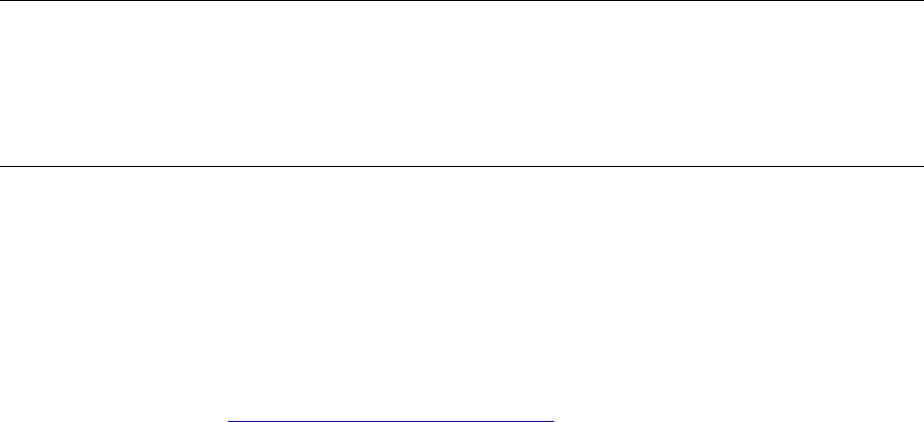RDF System Management Manual
Table Of Contents
- RDF System Management Manual
- What’s New in This Manual
- About This Manual
- 1 Introducing RDF
- RDF Subsystem Overview
- RDF Processes
- RDF Operations
- Reciprocal and Chain Replication
- Available Types of Replication to Multiple Backup Systems
- Triple Contingency
- Loopback Configuration (Single System)
- Online Product Initialization
- Online Database Synchronization
- Online Dumps
- Subvolume- and File-Level Replication
- Shared Access DDL Operations
- EMS Support
- SMF Support
- RTD Warning Thresholds
- Process-Lockstep Operation
- Support for Network Transactions
- RDF and NonStop SQL/MX
- Zero Lost Transactions (ZLT)
- Monitoring RDF Entities With ASAP
- 2 Preparing the RDF Environment
- 3 Installing and Configuring RDF
- 4 Operating and Monitoring RDF
- 5 Managing RDF
- Recovering From File System Errors
- Handling Disk Space Problems
- Responding to Operational Failures
- Stopping RDF
- Restarting RDF
- Carrying Out a Planned Switchover
- Takeover Operations
- Reading the Backup Database
- Access to Backup Databases in a Consistent State
- RDF and NonStop SQL/MP DDL Operations
- RDF and NonStop SQL/MX Operations
- Backing Up Image Trail Files
- Making Online Dumps With Updaters Running
- Doing FUP RELOAD Operations With Updaters Running
- Exception File Optimization
- Switching Disks on Updater UPDATEVOLUMES
- 6 Maintaining the Databases
- 7 Online Database Synchronization
- 8 Entering RDFCOM Commands
- 9 Entering RDFSCAN Commands
- 10 Triple Contingency
- 11 Subvolume- and File-Level Replication
- 12 Auxiliary Audit Trails
- 13 Network Transactions
- Configuration Changes
- RDF Network Control Files
- Normal RDF Processing Within a Network Environment
- RDF Takeovers Within a Network Environment
- Takeover Phase 1 – Local Undo
- Takeover Phase 2 – File Undo
- Takeover Phase 3 – Network Undo
- Takeover Phase 3 Performance
- Communication Failures During Phase 3 Takeover Processing
- Takeover Delays and Purger Restarts
- Takeover Restartability
- Takeover and File Recovery
- The Effects of Undoing Network Transactions
- Takeover and the RETAINCOUNT Value
- Network Configurations and Shared Access NonStop SQL/MP DDL Operations
- Network Validation and Considerations
- RDF Re-Initialization in a Network Environment
- RDF Networks and ABORT or STOP RDF Operations
- RDF Networks and Stop-Update-to-Time Operations
- Sample Configurations
- RDFCOM STATUS Display
- 14 Process-Lockstep Operation
- Starting a Lockstep Operation
- The DoLockstep Procedure
- The Lockstep Transaction
- RDF Lockstep File
- Multiple Concurrent Lockstep Operations
- The Lockstep Gateway Process
- Disabling Lockstep
- Reenabling Lockstep
- Lockstep Performance Ramifications
- Lockstep and Auxiliary Audit Trails
- Lockstep and Network Transactions
- Lockstep Operation Event Messages
- 15 NonStop SQL/MX and RDF
- Including and Excluding SQL/MX Objects
- Obtaining ANSI Object Names From Updater Event Messages
- Creating NonStop SQL/MX Primary and Backup Databases from Scratch
- Creating a NonStop SQL/MX Backup Database From an Existing Primary Database
- Online Database Synchronization With NonStop SQL/MX Objects
- Offline Synchronization for a Single Partition
- Online Synchronization for a Single Partition
- Correcting Incorrect NonStop SQL/MX Name Mapping
- Consideration for Creating Backup Tables
- Restoring to a Specific Location
- Comparing NonStop SQL/MX Tables
- 16 Zero Lost Transactions (ZLT)
- A RDF Command Summary
- B Additional Reference Information
- C Messages
- D Operational Limits
- E Using ASAP
- Index

Network Transactions
HP NonStop RDF System Management Manual—524388-003
13-12
Takeover and the RETAINCOUNT Value
If we return to the issue of T
13
in the example further above, note that the commit
sequence differs on \A and \B. When the purger on \A determines that T
12
, T
14
, and
T
15
must be undone, it also determines that the results of T
13
can be kept intact
because T
13
had to have completed on \B before T
12
. Why? The commit records on
\A guarantee that both T
12
and T
13
did indeed commit. Therefore, although the
commit record for T
12
is missing from \B, the commit record for T
13
is present. This
guarantees that T
13
committed prior to T
12
, and that the results of T
13
can be kept
intact on both nodes.
When a purger determines that it can keep the results of a transaction even though
that transaction follows one that must be undone because data for it is missing
elsewhere, the purger logs an RDF 823 event message identifying the particular
transaction.
Takeover and the RETAINCOUNT Value
In order for all systems in an RDF network to execute phase 3 takeover processing
correctly, you must ensure that all image data potentially needed for undo is available
on each system. The way to achieve that is to set the purger’s RETAINCOUNT to an
acceptable value on each system. For a complete discussion about this attribute and
how it works, refer to Section 10, Triple Contingency. (The same RETAINCOUNT
guidelines that apply to a triple contingency environment also apply to an RDF network
environment.)
Note that if you have not set the RETAINCOUNT properly and image files have been
purged that are subsequently needed for phase 3 takeover processing, the takeover
operations on the systems where the image data is missing might fail. In such a case,
your entire distributed database across all RDF backup systems could be
compromised with inconsistent data.
Note. If you have local transactions that do not touch data involved in network transaction
activity, and you do not want these local transactions undone just because data might be
missing for the network transactions during a takeover operation, you are advised to configure
separate RDF subsystems: one to protect just the data involved in network transaction activity,
and the second to protect the non-network data. Of course, both sets of data must have no
dependencies on the other.










